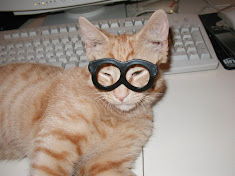Have you ever looked at your cat's claws? If you gently press on his paw pad, the little sword will pop out so you can have a good look at it. Just look at those things. You would never consider cat claws a form of skin!
 |
| Nature's Scratching and Sharpening Post by Arnaud Soyez |
Cat claws have a dermis and an epidermis. Keratin forms the outermost layer of the outer epidermis. It forms a horn-like protein called the cuticle. This cuticle is hard and white and is actually dead tissue. Its job is to protect the living tissue on the inner part of the cat claw.
The inner tissue is called the quick. You can tell this easily because it is pink colored. It's pink because that is blood. There is also nerves at the quick. Cat claws regenerate with cells much like your skin regenerates.
Each claw is attached to the terminal bone of your cat's toe and is held in place by a thin layer of skin. Tendons above and below the toe bones are what your cat uses to extend and retract his claws.
One reason your cat can sneak up on prey is because his claws retract. Unlike a dog who's toenail clicky, clack across the kitchen floor, your cat walks silently without all that racket. Watch out mouse!
Your cat's claws perform other life saving functions. Your cat can escape a chasing coyote or dog by running up a tree. He can use his cat claws to rip away at another animal trying to harm him. Extended cat claws are essential to fend off predators.
The average cat has 18 claws-four on each hind paw and four on each front paw plus a dew claw. The dew claw is sort of like a human thumb without all the dexterity.
Although claws really don't present a problem to your cat, claws can be a problem for cat owners. Cats absolutely must scratch. That's where the problem come into play.
When your cat scratches away at your couch or carpet or table leg, then you get perturbed. Cat scratching is innate behavior, meaning that it's part of their nature.
They scratch for three reasons: to leave visual markers; to mark territory with scent glands in their paws; to slough off the old outer layer of their claws.
It really is easy and far more cost effective to provide your kitty with a good cat tree that he can use for his shedding his cat claws and marking. They love sisal and that is a better choice than a carpet covered cat tree.
Author Resource: Written by Kate Rieger
Try the natural remedies found at http://www.Better-Pet-Health.com to keep your kitty healthy and vigorous. Find help for cystitis in cats at http://www.Pet-Natural-Remedies.com
Article From Pet Article World



0 comments:
Post a Comment